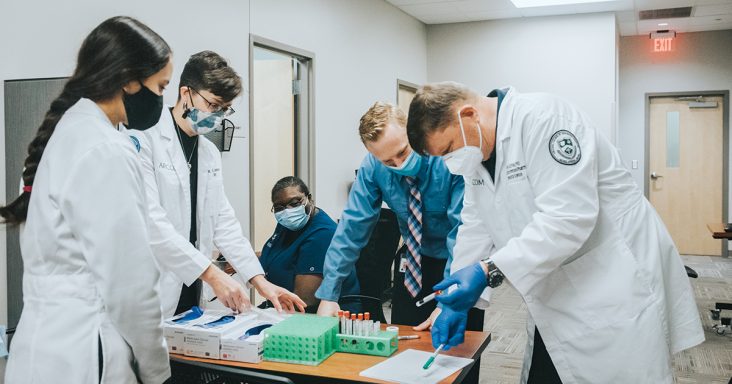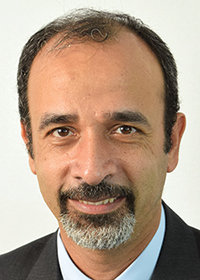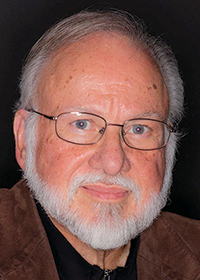Arkansas Colleges of Health Education opens state pipeline for healthcare talent, research
by October 29, 2020 9:51 am 2,171 views

The Arkansas Colleges of Health Education in Fort Smith is expanding, an opportunity that will create national models for health and wellness instruction and medical research.
The new Arkansas Colleges of Health Education (ACHE) medical research institute to be located in the former Golden Living building in Fort Smith will do more than bring medical research to the region. It will give the medical colleges the ability to recruit top-tier professors, boost the region’s economy and improve Arkansas’ health.
Kyle Parker, ACHE CEO, announced the colleges’ purchase of Golden Living’s former headquarters building on Sept. 22, noting at the time that the purchase was a game-changer, part two.
The five-story building, which sits on 54.5 acres, is valued by the Sebastian County Assessor at $16.12 million.
It will be used by ACHE for two primary purposes: A health and wellness center, and space for what ACHE says “will make us the largest research institution of any osteopathic school in the nation.”
Parker said the project’s initial investment will be around $20 million and will create between 30 and 50 jobs.
Golden Living-affiliated companies will continue to lease the second and third floors. The first floor will house the health and wellness center, and the fourth and fifth floors will be used for the research facility. The fifth floor could also be used for offices, Parker said.
The wellness center and research institute could be fully operational within 18 months, Parker said.
The ACHE was born when the Fort Smith-based Degen Foundation used part of $70 million from the sale of Sparks Health System in November 2009 to what was then Naples, Fla.-based Health Management Associates to build the Arkansas College of Osteopathic Medicine (ARCOM) at Chaffee Crossing. The $32.4 million college and its 103,000 square feet is now home to 600 medical students. ACHE has since built a 66,000-square-foot College of Health Science building on the campus that will be home to physical therapy, occupational therapy and physician assistant degree programs.
‘IMPROVE THE HEALTH OF ARKANSAS’
The ACHE Biological Research Lab is 7,000 square feet housed in the Arkansas College of Osteopathic Medicine. The new research institute will be as much as 120,000 square feet and hold four to five research centers, said Dr. Talal El-Hefnawy, ACHE director of research, who will be in charge of the new space.

Ongoing research lab space is now used by pre-clinical doctorates and clinical doctors and includes wet lab and dry lab research. Parker said there are under 10 research projects underway.
“Serological research has already begun on the Arkansas College of Osteopathic Medicine campus as ARCOM researchers are actively involved in studies to help find a solution to the antibody questions of COVID-19,” ACHE said in a statement.
El-Hefnawy said initial plans for the institute include a cancer center, cardiovascular center, diabetes center and addiction/substance abuse center.
“ACHE has as its mission the education of a diverse group of highly competent and compassionate health care professionals; to create health and research support facilities; and to provide healthy living environments to improve the lives of others,” he said. “This research institute will allow us to do that. We can improve the health of Arkansas.”
Instead of having a set number of cardiologists in the Fort Smith area — as is now the case — a cardiovascular research center will attract researchers and help grow the number of professionals in the area, El-Hefnawy said.
“We can invite cardiologists to the area for research, and it will help us to have a better understanding of cardiovascular disease,” he said.
RESEARCH OPPORTUNITIES
Thomas Yorio, who has been hired as a research consultant, said the research would provide practical medical benefits.
“The plans to add state-of-the-art research and clinical facilities within the same complex will allow for the translation of research from the bench to the bedside. Besides the enormous effect it will have on the well-being of the population of Fort Smith, it will also add a substantial economic impact,” Yorio said.
Clinical research allows ARCOM to recruit those involved with clinical trials, El-Hefnawy said.

“It will provide space for clinical trials in which patients are already enrolled at facilities around town. But now it can all be in one spot in one institute,” he said. “Clinical samples can be taken from a biopsy, then taken across the hall for experiments and research.”
ARCOM students will also now be able to participate in more research allowing for more evidence-based learning rather than just conceptual learning, he said.
“It lets graduates understand and get experience prior to residencies, not just read and study. It allows for graduates who can independently think,” El-Hefnawy said.
It could also allow ARCOM medical students to have a summer rotation that could involve research, he said, noting that students at the University of Pittsburgh medical school had to do four to six months of research.
“It produces doctors who can think outside the box,” he said.
He said the extra research experience and research internships would also help graduates be accepted into their residency programs.
PIPELINE OF TALENT
Students will also benefit from the professors the school will be able to recruit, El-Hefnawy said. He said the move by ACHE to expand research space significantly “proves that ACHE is no longer seeking a competitive edge, but a regional and a national leadership role.”
“There are professors we would like to recruit, but they are heavy on research. The top-tier recruits need a place they can conduct their research. They have grants, are involved in trials. It is hard to recruit without a facility that will allow them to do the research they need to do,” he said. “Now we are competitive. They can research while they teach. They can get grants.”
El-Hefnawy said the college is working on adding between 20 and 25 professors to its staff. And these professors will bring staff with them, he said. The college will also collaborate with other research clinics on projects that will bring more researchers to Fort Smith.
Collaborating with national and international companies and research facilities would give the college a platform outside the area.
“We will learn from their experience, and they will learn from us,” El-Hefnawy said. “A pipeline will come to Fort Smith of researchers, doctors, their families, etc.”
All of this could bring an economic boost to the region, he said.
“It certainly happened that way at Hillman,” El-Hefnawy said, a reference to the University of Pittsburgh Medical Center Hillman Cancer Institute, where he worked before coming to ACHE. “It brings jobs.”
He said the larger space that already has meeting rooms and an auditorium also is perfect for international research conferences.
“No one else has something like this. For international conferences, you usually have to go to somewhere like Las Vegas, but we will have the ability to host them here,” he said. “There are so many possibilities.”
